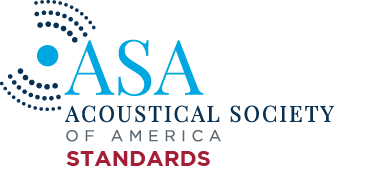We’re delighted to announce this set of newly reaffirmed (2023) ASA Standards:
ASC S2 Committee:
ASA/ANSI S2.72-2003/Part 4 (R2023)/ISO 2631-4-2001 (R2023)
Mechanical Vibration and Shock – Evaluation of Human Exposure to Whole Body Vibration – Part 4: Guidelines for the Evaluation of the Effects of Vibration and Rotational Motion on Passenger and Crew Comfort in Fixed-Guideway Transport Systems
Abstract:
The purpose of this part of ANSI S2.72 / ISO 2631 is to help in the design and evaluation of fixedguideway passenger systems, with regard to the impact of vibration and repetitive motions on passenger comfort. Fixed-guideway vehicles provide a predictable but complex multi-axis motion environment that is a function of the guideway, vehicle and seat or berth. Passengers evaluate ride comfort not only based on motion but also on their expectations with regard to the class of service that they have purchased. The duration of the trip has not been demonstrated to be a direct factor in predicting comfort (with the possible exception of kinetosis), but the anticipated duration of the trip is related to the types of activities passengers expect to accomplish while on board. Passengers on trips of more than a few minutes may expect to read, write, eat and drink; on trips of longer duration they will expect to sleep. To the extent that ride-induced vibration interferes with these activities, passengers may rate differently the comfort of vehicles with the same motion environment but different expected levels of service or different trip durations. Passengers are likely to judge comfort based on the interaction of vibration with factors such as acoustic noise, temperature, humidity, air quality and seat design.
ASA/ANSI S2.72/Part 4 Amd. 1-2010/ISO 2631-4 Amd. 1:2010 (R2023)
Mechanical Vibration and Shock – Evaluation of Human Exposure to Whole Body Vibration – Part 4: Guidelines for the Evaluation of the Effects of Vibration and Rotational Motion on Passenger and Crew Comfort in Fixed-Guideway Transport Systems
Abstract:
This amendment to ANSI S2.72-2003/Part 4 / ISO 2631-4:2001 (R2007) incorporates a new Annex B
“Statistical analysis method.” This annex cancels and replaces ISO 10056:2001 Mechanical vibration – Measurement and analysis of whole-body vibration to which passengers and crew are exposed in railway vehicles.
ASC S3 Committee:
ASA/ANSI S3.55-2014/Part 1/IEC 60318-1:2009 (R2023)
Electroacoustics – Simulators of Human Head and Ear – Part 1: Ear Simulator for the Measurement of Supra-aural and Circumaural Earphones
Abstract:
ANSI/ASA S3.55-2014 / IEC 60318-1:2009 specifies an ear simulator for the measurement of supra-aural and circumaural earphones (used for example in audiometry and telephonometry) applied to the ear without acoustical leakage, in the frequency range from 20 Hz to 10 kHz. The same device can be used as an acoustic coupler at additional frequencies up to 16 kHz.
ASA/ANSI S3.1-1999 (R2023)
Maximum Permissible Ambient Noise Levels for Audiometric Test Rooms
Abstract:
This Standard specifies maximum permissible ambient noise levels (MPANLs) allowed in an audiometric test room that produce negligible masking (ˇ2 dB) of test signals presented at reference equivalent threshold levels speci ed in ANSI S3.6-1996 American National Standard Speci cation of Audiometers. The MPANLs are speci ed from 125 to 8000 Hz in octave and one-third octave band intervals for two audiometric testing conditions (ears covered and ears not covered) and for three test frequency ranges (125 to 8000 Hz, 250 to 8000 Hz, and 500 to 8000 Hz). The Standard is intended for use by all persons testing hearing and for distributors, installers, designers, and manufacturers of audiometric test rooms. This standard is a revision of ANSI S3.1-1991 American National Standard Maximum Permissible Ambient Noise Levels for Audiometric Test Rooms.

0 Comments